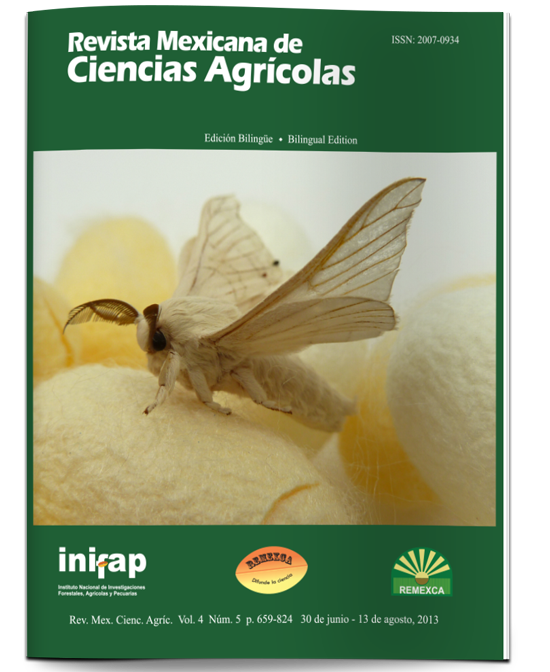Qualitative and quantitative variability determined through morphological characterization in amaranth accessions
DOI:
https://doi.org/10.29312/remexca.v4i5.1179Keywords:
Amaranthus spp., morphological characterization, qualitative and quantitative variabilityAbstract
The classification within the genus Amaranthus has been quite difficult, mainly because highly segregating characters within the populations have been considered for this. The aim of this study was to morphologically characterize Amaranthus spp., germplasm in order to know the existent qualitative and quantitative variability in the INIFAP’s collection of the genetic resources program (CEVAMEX). During the spring-summer season, 2009, 155 accessions were established in INIFAP’s Mexican Valley Experimental Station in Santa Lucía de Prías, Texcoco, State of Mexico. The morphological characterization was made based on a list of qualitative and quantitative descriptors proposed by Grubben and Van Sloten (1981). All the quantitative studied variables showed high variability, considering the highly significant differences between populations and species. The species A. hypochondriacus was the most frequent with 66.7% of the studied germplasm; other species found were A. cruentus, A. caudatus and A. hybridus. A large variation of colors, sizes and shapes in stem, inf lorescence and leaves within each species was observed for the qualitative traits. The amaranth germplasm available today shows a large morphological diversity, due to a high degree of cross- breeding. There is quite an enormous phenotypic variation between and within the species of Amaranthus genus, which might be used for breeding proposes and also to understand the diversity of this crop in Mexico.
Downloads
Downloads
Published
How to Cite
Issue
Section
License
The authors who publish in Revista Mexicana de Ciencias Agrícolas accept the following conditions:
In accordance with copyright laws, Revista Mexicana de Ciencias Agrícolas recognizes and respects the authors’ moral right and ownership of property rights which will be transferred to the journal for dissemination in open access. Invariably, all the authors have to sign a letter of transfer of property rights and of originality of the article to Instituto Nacional de Investigaciones Forestales, Agrícolas y Pecuarias (INIFAP) [National Institute of Forestry, Agricultural and Livestock Research]. The author(s) must pay a fee for the reception of articles before proceeding to editorial review.
All the texts published by Revista Mexicana de Ciencias Agrícolas —with no exception— are distributed under a Creative Commons License Attribution-NonCommercial 4.0 International (CC BY-NC 4.0), which allows third parties to use the publication as long as the work’s authorship and its first publication in this journal are mentioned.
The author(s) can enter into independent and additional contractual agreements for the nonexclusive distribution of the version of the article published in Revista Mexicana de Ciencias Agrícolas (for example include it into an institutional repository or publish it in a book) as long as it is clearly and explicitly indicated that the work was published for the first time in Revista Mexicana de Ciencias Agrícolas.
For all the above, the authors shall send the Letter-transfer of Property Rights for the first publication duly filled in and signed by the author(s). This form must be sent as a PDF file to: revista_atm@yahoo.com.mx; cienciasagricola@inifap.gob.mx; remexca2017@gmail.
This work is licensed under a Creative Commons Attribution-Noncommercial 4.0 International license.



